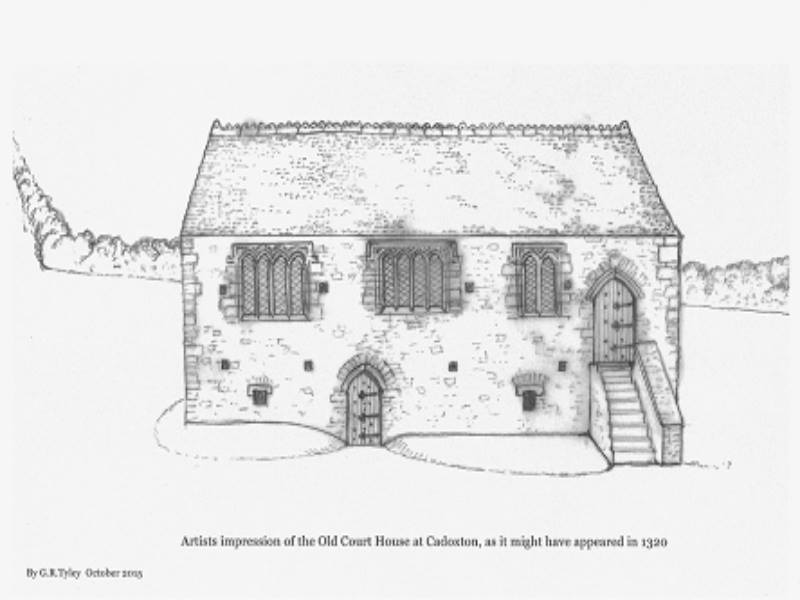The manorial court at Cadoxton was one of the lowest courts of law in Wales during the feudal times, it only had civil jurisdiction limited both in subject matter and geographically.
It dealt with matters over which the lord of the manor had jurisdiction, primarily torts, this is a civil wrong in common law jurisdictions, local contracts and land tenure, and their powers only extended to those living within the lands of the manor both the demesne and such lands as the lord had enfeoffed to others.
The lord of the manor during this period was probably John de Sumeri, and his courthouse stood free standing in the middle of an open space surrounded by fields to the north, east, and west, to the south stood the manor house with its dovecote, kitchen and brew house and domestic buildings enclosing a court yard.
It is more than likely that the manor house was first built in the late twelfth century with buildings added to in the thirteenth century; the court house was probably built in the reign of Edward I 1272-1307 and was a separate portion of the lord’s demesne.
It is uncertain at what date it became a ruin, but was in a state of disrepair long before the nineteenth century, its stones were reused to remodel the old mansion house built by the Andrew family in the early fifteenth century, this was now to be a new rectory for the reverend John Hughes of Taff’s Well and it would take its name from the demolished court house, and to this day is known as The Court.
